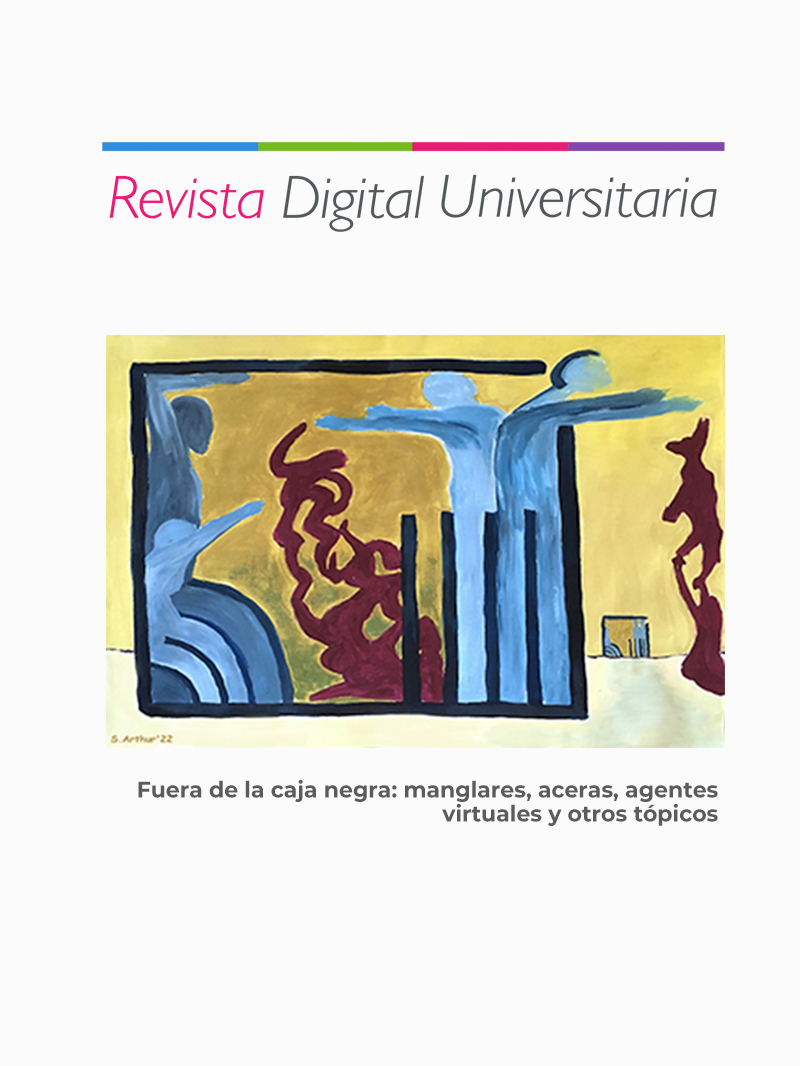Sleep well or sleep with obstructive sleep apnea
DOI:
https://doi.org/10.22201/ceide.16076079e.2024.25.5.3Keywords:
sleep, apnea, snore, obstruction, polygraphyAbstract
Human beings carry out many activities, which make it necessary both to eat food and to rest, to recover energy and be ready for a new day. The best way to rest is to sleep. Studies have allowed us to know that sleep is essential for the proper functioning of the body and brain. Therefore, it is extremely important to sleep, and not just sleep but sleep well. Good sleep is based on the number of hours we sleep and its quality. To achieve this, we must have good habits, which include: a regular sleeping schedule, avoiding the intake of caffeine or heavy foods, exercising, among others. Currently, we know of several sleep disorders that hinder good sleep, one of the most prevalent in the Mexican population is obstructive sleep apnea syndrome, in which the upper airways become obstructed while we sleep, producing a reduction or stoppage of the air flow. If we detect this disease, we can treat it and recover good sleep, to achieve a good quality of life.
References
Alzahrani, M. M., Alghamdi, A. A., Alghamdi, S. A., y Alotaibi, R. K. (2022). Knowledge and Attitude of Dentists Towards Obstructive Sleep Apnea. International Dental Journal, 72(3), 315-321. https://doi.org/10.1016/j.identj.2021.05.004
Chaput, J. P., McHill, A. W., Cox, R. C., Broussard, J. L., Dutil, C., da Costa, B. G. G., Sampasa-Kanyinga, H., Wright, K. P. (2022). The role of insufficient sleep and circadian misalignment in obesity. Nature Reviews Endocrinology, 19(2), 82-97. https://doi.org/10.1038/s41574-022-00747-7
Chung, F. (2008). stop questionnarie: a tool to screen patients for obstructive sleep apnea. https://www.fundaciontorax.org.ar/calc/sas/stop_bang.htm
Dijk, D. J., y Landolt, H. P. (2019). Sleep Physiology, Circadian Rhythms, Waking Performance and the Development of Sleep-Wake Therapeutics. En M. C. Michel (Ed.), Handbook of Experimental Pharmacology (pp. 441481). https://doi.org/10.1007/164_2019_243
Foster, R. G. (2020). Sleep, circadian rhythms and health. Interface Focus, 10(3). https://doi.org/10.1098/rsfs.2019.0098
Gossard, T. R., Trotti, L. M., Videnovic, A., y St Louis, E. K. (2021). Restless Legs Syndrome: Contemporary Diagnosis and Treatment. Neurotherapeutics, 18, 140-155. https://doi.org/10.1007/s13311-021-01019-4
Granados Gurola, A. (2018, 16 de marzo). Los 10 mandamientos de la higiene del sueño para adultos (por la World Sleep Society). https://tinyurl.com/usx8kdyw
Guerrero-Zúñiga, S., Gaona-Pineda, E., Cuevas-Nasu, L., Torre-Bouscoulet, L., Reyes-Zúñiga, M., Shamah-Levy, T., y Pérez-Padilla, R. (2018). Prevalencia de síntomas de sueño y riesgo de apnea obstructiva del sueño en México. Salud Pública de México, 60(3), 347–355. https://tinyurl.com/4nmzdmwn
Hooper, R. G. (2020). cpap Therapeutic Options for Obstructive Sleep Apnea. Pragmatic and Observational Research, 11, 67-76. https://doi.org/10.2147/por.s258632
Krueger, J. M., Frank, M. G., Wisor, J. P., y Roy, S. (2016). Sleep function: Toward elucidating an enigma. Sleep Medicine Reviews, 28, 46-54. https://doi.org/10.1016/j.smrv.2015.08.005
Lane, J. M., Qian, J., Mignot, E., Redline, S., Scheer, F. A. J. L., y Saxena, R. (2022). Genetics of circadian rhythms and sleep in human health and disease. Nature Reviews Genetics, 24, 4-20. https://doi.org/10.1038/s41576-022-00519-z
Lévy, P., Kohler, M., McNicholas, W. T., Barbé, F., McEvoy, R. D., Somers, V. K., Lavie, L., y Pépin, J. L. (2015). Obstructive sleep apnoea syndrome. Nature Reviews Disease Primers, 1, 15015. https://doi.org/10.1038/nrdp.2015.15
Li, J., Vitiello, M. V., y Gooneratne, N. S. (2017). Sleep in Normal Aging. Sleep Medicine Clinics, 13(1), 1-11. https://doi.org/10.1016/j.jsmc.2017.09.001
Mason, G. M., Lokhandwala, S., Riggins, T., Spencer, R. M. C., Sciences, B., y Program, B. (2021). Sleep and human cognitive development. Sleep Medicine Reviews, 57, 101472. https://doi.org/10.1016/j.smrv.2021.101472
Nogueira, F., Borsini, E., Cambursano, H., Smurra, M., Dibur, E., Franceschini, C., Pérez-Chada, D., Larrateguy, L., y Nigro, C. (2019). Guías prácticas de diagnóstico y tratamiento del síndrome de apneas e hipopneas obstructivas del sueño: Actualización 2019: Sección Sueño, Oxigenoterapia y Tratamientos Crónicos Domiciliarios. Asociación Argentina de Medicina Respiratoria. Revista americana de medicina respiratoria, 19(1), 59-90. https://tinyurl.com/47truz8d
Nucleus Health Videos – Español (2020, 10 de agosto). Apnea Obstructiva del sueño [Video]. YouTube. https://www.youtube.com/watch?v=oFlXNAHaHvM
Patel, A. R., Patel, A. R., Singh, S., Singh, S., y Khawaja, I. (2019). Global Initiative for Chronic Obstructive Lung Disease: The Changes Made. Cureus, 11(6), e4985. https://doi.org/10.7759/cureus.4985
Revista Medicina y Salud Pública. (2023, 23 de septiembre). Día Mundial del Síndrome de Piernas Inquietas: ¿Qué es y cómo funciona? [Video] Facebook. https://tinyurl.com/52sbz94p
Xie, Z., Chen, F., Li, W. A., Geng, X., Li, C., Meng, X., Feng, Y., Liu, W., y Yu, F. (2017a). A review of sleep disorders and melatonin. Neurological Research, 39(6), 559-565. https://doi.org/10.1080/01616412.2017.1315864
Published
Issue
Section
License
Copyright (c) 2024 Revista Digital Universitaria

This work is licensed under a Creative Commons Attribution-NonCommercial-ShareAlike 4.0 International License.

Revista Digital Universitaria es editada por la Universidad Nacional Autónoma de México se distribuye bajo una Licencia Creative Commons Atribución-NoComercial 4.0 Internacional. Basada en una obra en http://revista.unam.mx/.






